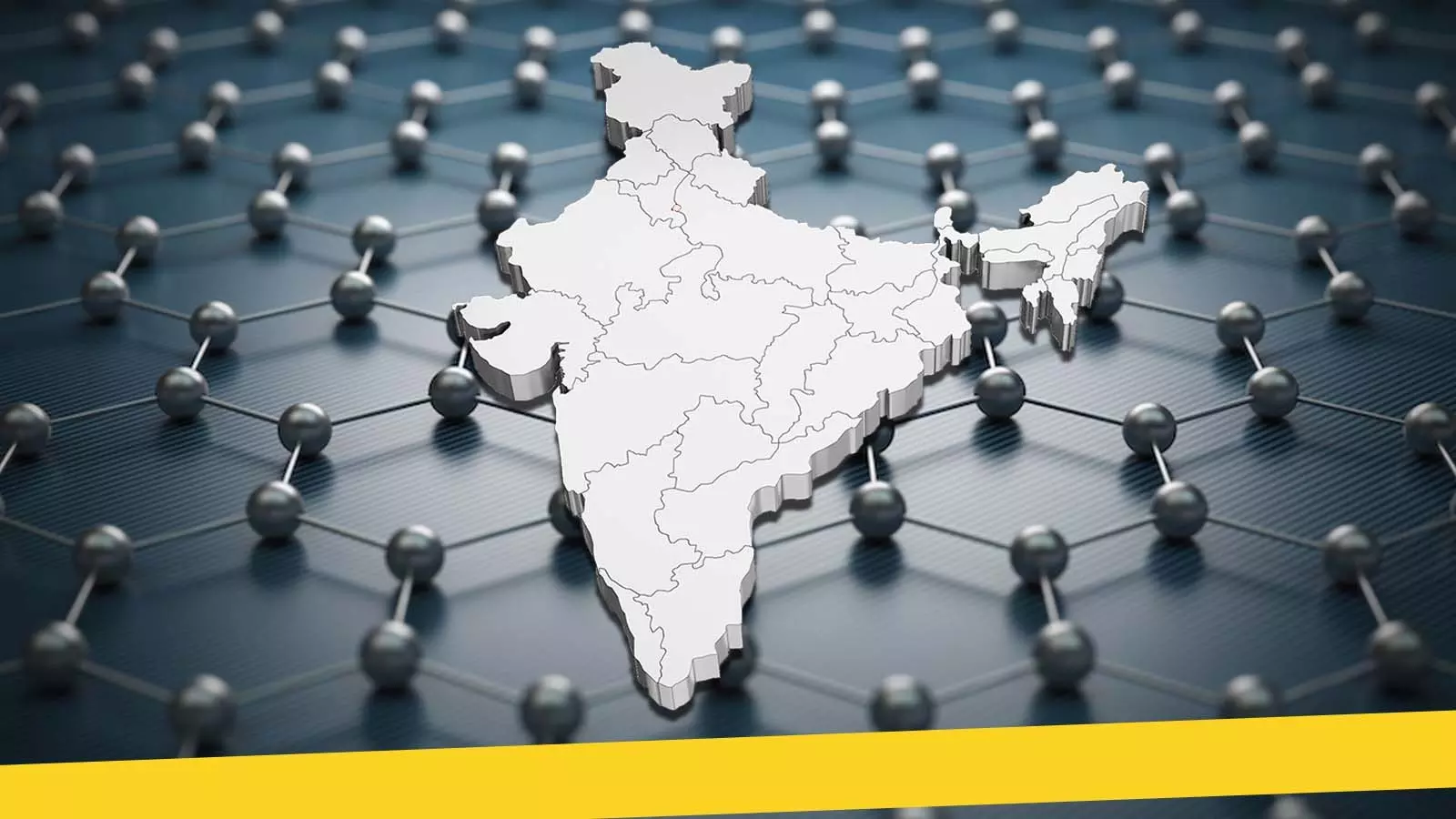
With scientific expertise, growing industry partnerships, and emerging government initiatives, India stands at a pivotal moment in the 2D revolution. Representational image
The 2D material revolution: Can India catch up with global leaders?
Stronger than steel, thinner than hair - 2D materials could revolutionise chips, batteries, and electronics. The key for India lies in balancing today’s achievable goals with tomorrow’s grand ambitions

Imagine a material 80,000 times thinner than human hair but 200 times stronger than steel. It’s not science fiction - it’s the promise of 2D materials. These ultra-thin, atom-layered substances are reshaping physics, electronics, and energy systems worldwide.
To explore their potential, The Federal spoke to Dr Abhishek Misra, Principal Investigator at the 2D Materials Innovation and Research Centre, IIT Madras, who explained how these materials are redefining science and industry.
“2D materials mean their vertical thickness is extremely low, but they still have a sheet-like structure,” said Dr Misra. “The single layer of graphene, derived from graphite, is the thinnest natural material known.”
What makes 2D materials special
2D materials conduct electricity faster, transfer heat more efficiently, and bend without breaking. They could enable superfast transistors, flexible electronics, transparent solar panels, and next-gen batteries that charge within minutes.
The journey began in 2004 when UK scientists Andre Geim and Konstantin Novoselov peeled a single atomic layer from graphite using scotch tape - a discovery that won them the 2010 Nobel Prize in Physics. Since then, scientists have identified hundreds of other 2D materials, such as boron nitride and phosphorene, each with unique properties.
Also Read: IIT Madras launches first-of-its-kind cancer genome database
While countries like China, the US, and Singapore are already investing heavily in 2D research, India is now gearing up to enter the race.
India’s innovation hub plan
The Indian government plans to establish a 2D Material Fab and Innovation Hub under the Anusandhan National Research Foundation (ANRF). A “fab” is a highly-controlled facility where electronic components like chips are manufactured.
The goal is to unite scientists and industry to accelerate India’s participation in the global 2D material ecosystem. However, Dr Misra warned that the current plan to set up only one hub may not be sufficient for a country as vast as India.
Also Read: Chennai to Bengaluru in 30 minutes? IIT Madras develops India's first hyperloop test track
“If someone is researching from Jammu to Kanyakumari, travelling to a single centre isn’t feasible,” he said. “We need multiple hubs across regions to make it accessible and effective.”
Can 2D replace silicon?
Currently, silicon remains the foundation of modern electronics. It’s a 3D material with atoms tightly packed in all directions. In contrast, 2D materials are flat sheets with no thickness, capable of bending and staying transparent.
But Dr Misra cautioned against abandoning silicon too soon.
“Skipping silicon and going straight to 2D materials is too ambitious,” he said. “We must learn from silicon and integrate 2D materials with existing CMOS technologies.”
Also Read: Silicon dreams, red-tape reality: India’s chip push hits policy hurdles
This hybrid approach - combining traditional silicon chips with 2D layers - could open the door to new generations of flexible, efficient, and compact devices.
The path ahead for India
While global players are racing ahead, India is still in the early stages. Yet, Dr Misra believes the country doesn’t have to wait decades to make an impact.
“There are low-end applications like battery electrodes, displays, or anti-corrosive coatings where development can happen in parallel,” he explained. These early applications could serve as stepping stones towards more advanced, chip-level innovations.
Also Read: Can Tamil Nadu be India's Silicon Valley? Why Mudal VC thinks yes
With scientific expertise, growing industry partnerships, and emerging government initiatives, India stands at a pivotal moment in the 2D revolution. The key lies in balancing today’s achievable goals with tomorrow’s grand ambitions.
Because in the realm of 2D materials, the future of technology is not just thinner or faster - it’s atomic.
(The content above has been transcribed from video using a fine-tuned AI model. To ensure accuracy, quality, and editorial integrity, we employ a Human-In-The-Loop (HITL) process. While AI assists in creating the initial draft, our experienced editorial team carefully reviews, edits, and refines the content before publication. At The Federal, we combine the efficiency of AI with the expertise of human editors to deliver reliable and insightful journalism.)

